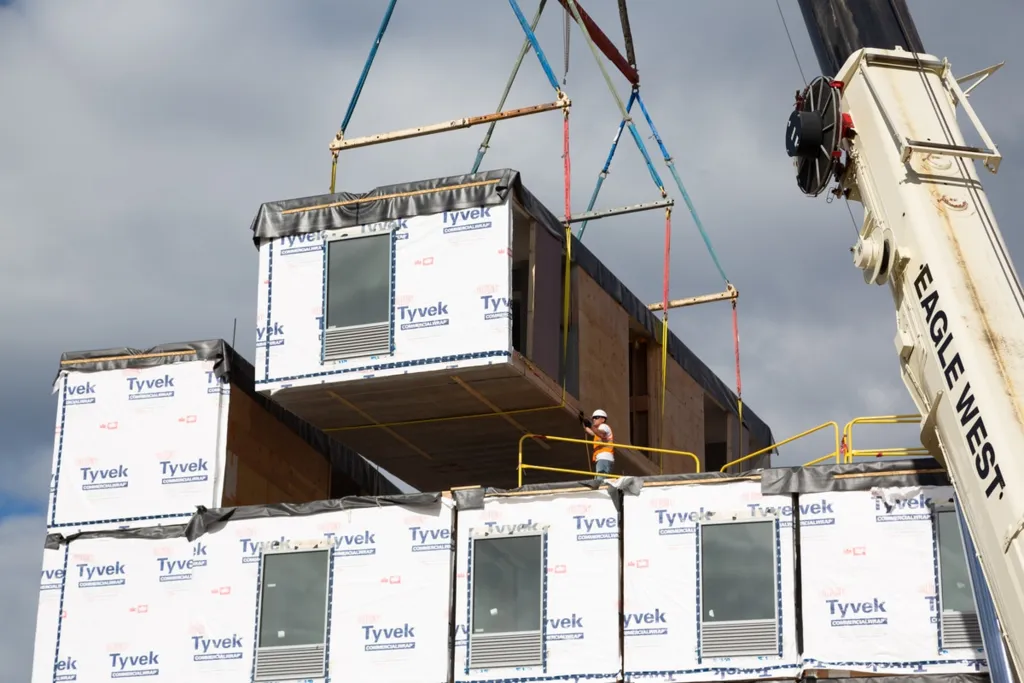Modular construction is gaining significant traction in Indonesia, offering solutions to longstanding challenges in the construction industry. This method involves prefabricating building components off-site and assembling them on-site, leading to benefits such as cost efficiency, waste reduction, and accelerated project timelines.
The Rise of Indonesia Modular Construction Adoption

The Indonesian modular construction market is projected to grow at a compound annual growth rate (CAGR) exceeding 6.5% between 2024 and 2029. This growth reflects a broader acceptance of modular methods within the country's construction sector. A 2024 survey by the Construction Industry Development Board (CIDB) Indonesia found that 70% of construction companies are now more open to adopting modular techniques than they were five years ago. This shift is largely due to technological advancements and successful project outcomes.
As of 2023, modular construction accounts for approximately 5% of all new construction projects in Indonesia, doubling its share since 2018. This growth is fueled by successful pilot projects and increasing awareness of its benefits. For example, modular methods have been used to build affordable housing units, schools, and healthcare facilities in remote areas, addressing critical infrastructure gaps. Additionally, modular construction minimizes waste and improves quality control, as components are built in controlled factory environments.
Read Also: The Benefits of Modular Construction Indonesia
Government Initiatives and Investments
The Indonesian government is actively promoting modular construction to address housing shortages and infrastructure needs. The "One Million Houses Program" has increasingly incorporated modular methods, with government projects utilizing these techniques rising by 30% annually. To support this initiative, Bank Indonesia has increased liquidity for property sector loans, aiming to free up 80 trillion rupiah ($4.9 billion) to bolster housing development. This financial commitment underscores the government's dedication to modernizing the construction industry and providing affordable housing.
Advantages of Modular Construction
Cost Efficiency: Studies indicate that modular construction projects in Indonesia can reduce overall project costs by 15-20% compared to traditional methods. These savings are primarily due to decreased labor expenses and minimized material waste.
Accelerated Timelines: Modular construction significantly shortens project durations, with time reductions averaging 40-50%. This efficiency stems from the ability to conduct on-site and off-site work concurrently, expediting project completion.
Waste Reduction: Building in controlled factory settings allows for optimized material usage and effective recycling, leading to a 70-80% decrease in waste compared to traditional construction sites.
Read Also: Indonesia Sustainable Materials Adoption for Sustainability
Challenges and Future Outlook for Indonesia Modular Construction Adoption
Despite its benefits, the modular construction industry in Indonesia faces challenges, including logistical complexities and the need for skilled labor. Transporting prefabricated modules requires careful planning to prevent damage and manage costs. Moreover, as modular construction methods differ from traditional practices, there is a growing demand for workers trained in these new techniques.
To address these issues, investment in specialized training programs and infrastructure is essential. As the industry evolves, the development of standardized designs and components can further streamline processes, making modular construction an increasingly viable solution for Indonesia's building needs.
Read Also: The Struggle of Indonesia Affordable Housing Challenges
The adoption of modular construction in Indonesia is transforming the country's building landscape. With clear advantages in cost savings, time efficiency, and environmental impact, modular methods are poised to play a pivotal role in meeting Indonesia's growing infrastructure and housing demands. Continued support from both the government and private sectors will be crucial in overcoming existing challenges and fully realizing the potential of modular construction in the nation.






